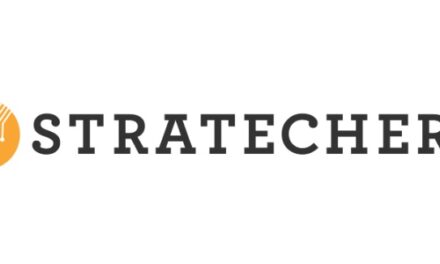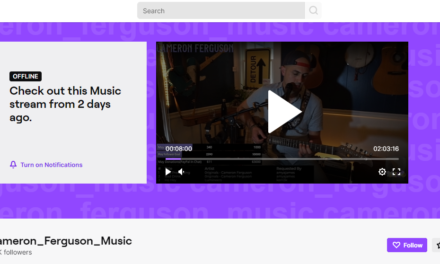If you work in marketing or advertising, you’ve likely read dozens of articles about how no one pays attention to anything for very long.
This isn’t necessarily a new phenomenon. Older generations have consistently been concerned with the inability of younger generations to sit still and focus, often due to new technologies or cultural phenomena that are considered distracting. From the 1950s through the 1990s, parents of Baby Boomers and Gen Xers voiced concerns about the inattention of their children, blaming new cultural touchstones like American Bandstand, Elvis, The Beatles, MTV, and computers (among other things).
These days, the conversation seems only to have grown. While it’s common to hear about the impact of the internet on the attention span of young whippersnappers, in this case Millennials and Gen Z, the impact that the digital age has had on attention spans of people of all ages has been discussed ad nauseum. Just look at this Time piece “You Now Have A Shorter Attention Span Than A Goldfish,” which recaps a recent study from Microsoft concluding that people (Canadians, to be specific) now generally lose concentration after eight seconds, down from 12 seconds in 2000.
It could be my ego talking, but I found it a bit jarring to have my attention span compared to a species best known for swimming around in a small glass bowl all day. So I asked myself two questions:
1. Do I really lose my concentration after eight seconds?
2. If so, why?
Truth is, my attention span kind of varies. I’d happily spend hours discussing the entire Wu-Tang Clan discography and the subsequent work of each member, but eight seconds feels like a lifetime in a budget meeting. Or, to take another example: I have a coworker (okay fine, multiple coworkers) who love to play Magic: The Gathering for hours on end, but would be miserable reading even the briefest of blog posts about celebrity gossip. So are our attention spans really short or long? Digging deeper I found that often when people refer to long or short attention spans, it seems that what is actually being discussed is an ability, or lack thereof, to pay attention to something that you don’t want to pay attention to-like budgets, or celebrity gossip. Virginia Heffernan discusses this idea in a 2010 New York Times Magazine article:
“Whether the Web is making us smarter or dumber, isn’t there something just unconvincing about the idea that an occult ‘span’ in the brain makes certain cultural objects more compelling than others? So a kid loves the drums but can hardly get through a chapter of ‘The Sun Also Rises’; and another aces algebra tests but can’t even understand how Call of Duty is played. The actions of these children may dismay or please adults, but anyone who has ever been bored by one practice and absorbed by another can explain the kids’ choices more persuasively than does the dominant model, which ignores the content of activities in favor of a wonky span thought vaguely to be in the brain.”
I agree with Heffernan’s point–it seems attention span varies depending more on whether or not it’s a topic that interests us, rather than there simply being one universal attention span. This can be difficult for professions such as teachers, who need to inspire tweens to pay attention to math when they could be looking at Justin Bieber’s Instagram (part of why I’m in awe of that profession).
But for marketers, who may not have quite as strict parameters on the range of topics they cover and the audience they target, understanding that the message impacts attention span has some very real implications. With that in mind, here are a few tips for marketers that want to connect with anyone, regardless of their supposedly goldfish-length attention span.
Be a Resource
When you’re a marketer, what you’re saying doesn’t have to be exactly about your product. In fact, it shouldn’t be-that gets boring quickly. Keep the values of your brand in mind, but write about topics that are helpful and interesting to your audience.
In a recent Wall Street Journal guest column, Kate Holmes, founder and chief executive of the investment firm Belmore Financial, explains that rather than pushing the company’s “product,” investment, her firm created educational videos that answer questions like “What’s a Roth?,” or “How to prepare for your pet’s future.”
It wouldn’t be appropriate for an investment firm to create a video about the latest pop music, but it also would alienate the audience to create a dry video about why they should invest with their firm; in other words, you need to provide practical and relevant information. If you do, even someone with the attention span of a goldfish will be paying attention.
Find Your Niche
As I said before, attention only is relevant in terms of topic. If someone is interested in a topic, they’re likely to pay attention, and vice versa. Marketers can use this to their advantage.
In the same way I would trust in-depth coverage of the 2016 presidential election from The New York Times, I would trust Red Bull to provide excellent content about extreme sports. A Millennial majoring in political science who is captain of the debate team will likely devote significant attention to the NYT, while a Millennial who rock climbs, sky dives, and snowboards in her free time will likely be attracted to Red Bull. It’s the interest in the topic that is important, not their age, or their overarching attention span. So find your niche and double down-the attention minutes should come naturally.
Optimize Based on Attention Minutes, Not Clicks
Do more of what people like. Clicks, opens, views and other vanity metrics don’t matter as much when you’re looking for attention; instead, look at metrics like attention time and time on page to see just how much deep interest your content is driving. There are a variety of free analytics tools to help with this. Find what captures your audience’s attention, rather than captures the biggest audience, and optimize from there.
Overall, that’s probably the most important takeaway: If you’re worried about your customer’s attention span, stop chasing views and click. Find your specialized topic and create valuable content meant specifically for your customers, and hey, you just might get a Millennial to put down the Bieber Instagram long enough to pay attention.






